WSLL @ Your Service June 2025
Contents
ATVs and Off-road Vehicles - Michael Keane

Motor vehicles, motorcycles, bicycles, and pedestrians share roads and trails with all-terrain vehicles (ATVs) and utility-terrain vehicles (UTVs). ATVs are defined in Wisconsin Statute 340.01(2g) as commercially designed and manufactured motor driven devices with a weight of 900 pounds or less and a width of not less than 50 inches. An ATV must be equipped with a seat designed to be straddled and have three or more wheels. Wisconsin Statute 23.33 defines UTVs as either:
- a commercially designed motor vehicle not meeting federal safety standards, weighing 3,000 pounds or less with four or more tires, a steering wheel, tail light, a brake light, two headlights, a width of not more than 65 inches, a system of occupant restraints, and a structural system designed to prevent occupants from being crushed in a rollover; or
- a vehicle that does not meet federal motor vehicle safety standards, designed to be used primary off-highway, with a weight of less than 3,000 pounds, a width of not more than 65 inches, a seat designed to be straddled, 3 tires or less, and not meeting the definition of an ATV.
Golf carts, low-speed vehicles, dune buggies, mini-trucks, and tracked vehicles are excluded from the definitions of ATV and UTV.
UTVs and ATVs may be operated on off-road trails designated for that purpose. ATV trails may be marked by distinctive regulatory signs for operators. The use of ATVs on roads and trails may be monitored by county sheriff department patrols supported by DNR grants.
Highway and road use
ATVs and UTVs can be used on Wisconsin highways, roads, and streets where the law permits. UTVs and ATVs may not be operated on any freeway in the interstate highway system, or on any other freeway not authorized by the Department of Transportation.
UTVs and ATVs may be operated on federal numbered highways, state trunk highways, and county trunk highways in certain limited circumstances: to cross a bridge, culvert, or railroad right of way; to cross a bridge of less than 1,000 feet pursuant to county ordinance; on roadways seasonally not maintained for vehicular traffic; and to cross a roadway. They may also be operated on municipal roads and streets designated a part of UTV and ATV trails by local ordinance.
Before using UTVs and ATVs on public highways, roads, streets, or off-road environments, they must be registered for public use with the DNR. ATVs and UTVs used outside of the highway or public trail system, like those used for agricultural purposes, may pay a lower annual registration fee. After registration, ATVs and UTVs must display registration plates with annual stickers, and operators must have a registration certificate in their possession.
Lawful and unlawful operation
Other restrictions may apply for operating an ATV and UTV. Wisconsin Statute 23.33 includes rules of operation for an ATV or UTV, like age restrictions, and describes penalties. DNR rules applicable to ATVs can be read at Wisconsin Administrative Code chapter NR 64. The DNR reports ATV and UTV registration and accident statistics on their website.
Image source: Adobe Stock
The 59th Anniversary of Miranda v. Arizona - Kaitlin Alighieri, Library Intern, Madison College Paralegal Program
The landmark case of Miranda v. Arizona turns 59 this month. On June 13, 1966, the U.S. Supreme Court handed down its decision in Miranda v. Arizona, a case that would forever impact how police interact with suspects. The Supreme Court needed to evaluate whether the Fifth Amendment's protection against self-incrimination extended to police interrogation, and if the suspect in custody was entitled to be informed of their rights.
The case consolidated four different situations where suspects had confessed under police questioning without being told that they had the right to remain silent or to consult an attorney. One of these individuals was Ernesto Miranda.
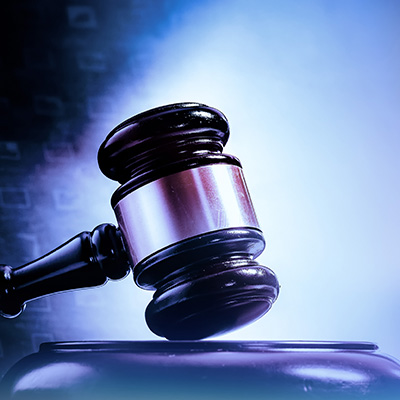
What happened?
Ernesto Miranda was arrested on March 13, 1963, as a suspect in kidnapping and rape. Police interrogated him for two hours without informing him of his rights, and Miranda signed a written confession. This confession became the central piece of evidence at trial, leading to his conviction. The case was appealed, and came before the U.S. Supreme Court.
On June 13, 1966, the Supreme Court ruled that presenting Miranda's confession as evidence violated his constitutional rights under the Fifth and Sixth Amendments. The Fifth Amendment protects people against self-incrimination and requires police to inform the suspect about their rights. The Sixth Amendment entitles the suspect the right to speak to an attorney. In a 5-4 decision, Chief Justice Earl Warren wrote that the confession violated Miranda's constitutional protections. The Court held that suspects must be informed of their rights, including their right to remain silent and their right to an attorney.
Impact on Law Enforcement
Before Miranda, confessions were deemed admissible/inadmissible through a concept known as the "totality of the circumstances." Judges would look at all the factors surrounding an interrogation and determine whether the confession was voluntary or coerced. They would weigh factors such as duration of the interrogation, physical conditions, and the mental state of the suspect. The system lacked clear standards, it was believed that the questioning of suspects was indispensable in many crimes, and coercion often went unchecked.
After Miranda, police departments across the country had to adjust quickly. Training manuals, procedures, and interrogation tactics were put in place. Over time, the Miranda ruling became deeply embedded in law enforcement.
Since Miranda, several cases have affirmed or clarified the scope.
In 1984, Berkemerv. McCarty clarified that Miranda warnings are not needed during routine traffic stops because these are brief interactions and are not considered custodial interrogations. However, Miranda warnings are required for custodial interrogations regardless of the severity of the offense.
In 2000, Dickerson v. United States reaffirmed that Miranda warnings are a constitutional requirement, not just a court-created rule. After Dickerson made a statement prior to his Miranda warning, the prosecution attempted to overrule Miranda by allowing the admission of his voluntary statement.
In 2010, Berghuis v. Thompkins clarified that even if a suspect remains silent, the police are not obligated to cease questioning. The suspect needs to explicitly state that they wish to remain silent for police to stop questioning.
Every person has heard the phrase "You have the right to remain silent." It's in movies, shows, news, classrooms, and more. It has played a vital role in civil education, emphasizing the transparency of the law. Reflecting on nearly six decades since Miranda is a reminder of the importance of protecting the rights and freedoms that are guaranteed to all.
Image source: Adobe Stock
New Books - Noelle Brasch
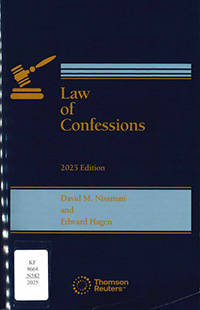
New Edition! Law of Confessions, by David M. Nissman and Edward Hagen
Call number: KF 9664 .N582 2025
Law of Confessions attempts to capture how confessions law got to be where it is today, and where it may be headed in the future. With expanded sections on self-incrimination and ethical considerations, Nissman and Hagen try to bring relevant cases to life in order to provide readers with the fullest understanding. As asserted in the book’s introduction: “confessions law is the paramount evidentiary issue in the criminal law today.”
Topics include:
- The Miranda rule and rights
- Attorney ethics rules
- Interrogation and the Sixth Amendment
- Self-incrimination and immunity
- Co-defendant confessions
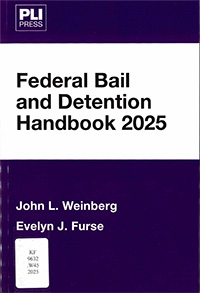
New Edition! Federal bail and detention handbook 2025, by John Weinberg and Evelyn Furse
Call number: KF 9632 .W45 2025
This handbook serves as a comprehensive guide on the Bail Reform Act of 1984 as well as its relevant history and case law. The book is a helpful reference for attorneys and judges alike, providing analysis through each step of the process.
Topics include:
- Bail Reform Act of 1984
- Factors courts consider
- Pretrial detention
- Proper procedure when there is a failure to appear
- Crimes while on release
![]() See our latest New Titles list for a list of new books and other resources.
See our latest New Titles list for a list of new books and other resources.
For assistance in accessing these or other resources, please contact our Reference Desk.
“In a Nutshell” Series Display - Noelle Brasch
The “In a Nutshell” series is a great place to start for a succinct, informative summary on legal concepts. Each compact book covers a specific area of law, providing an overview along with timely insight and updates. Come in to the library to pick up a book on your chosen topic or access the “In a Nutshell” series online through Lexis Digital Library.
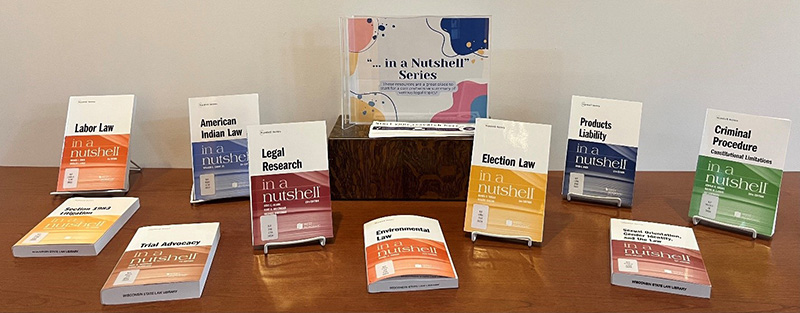
In this display
Labor law in a nutshell
KF 3369.3 L39 2022
American Indian law in a nutshell
KF 8205 .C36 2025
Products liability in a nutshell
KF 1296 .P48 2023
Criminal procedure: constitutional limitations in a nutshell
KF 9619.3 .I8 2024
Section 1983 litigation in a nutshell
KF 1325 .C58 C65 2024
Trial advocacy in a nutshell
KF 8915 .Z9 B47 2023
Legal research in a nutshell
KF 240 .C54 2024
Environmental law in a nutshell
KF 3775 .Z9 F56 2024
Election law in a nutshell
KF 4886 .T65 2024
Sexual orientation, gender identity, and the law in a nutshell
KF 4754.5 .C65 2024
Digital resources
A brief American legal history in a nutshell
2023
Wills and trusts in a nutshell
2023
First Amendment law in a nutshell
2023
And more in the library catalog!
Tech Tip - Heidi Yelk
Looking for federal court filings? Try Courtlistener's RECAP
RECAP is a handy way to get fast and free access to documents filed in federal court. RECAP is PACER spelled backwards. According to the project, "The RECAP Archive is the biggest open collection of PACER data on the Internet." The RECAP database is part of Courtlistener, and the Free Law Project, a nonprofit started in 2010 with a goal of building a free, open database of primary legal documents.
How do they get these documents?
There are various methods used to gather documents from PACER and add them to the RECAP database. One method is to rely on members of the public who have PACER passwords to share what they download from PACER. This is accomplished via the RECAP Extension, a browser tool that takes users' purchases from PACER and automatically adds the documents to the RECAP database. This crowd-sourcing is popular with journalists and bloggers who may be covering the same topics. Other document collection methods are described under Data Sources on this page.
Do I have to have the extension of be a member to get documents?
No. Anyone can search the RECAP database and retrieve documents if the document is available.
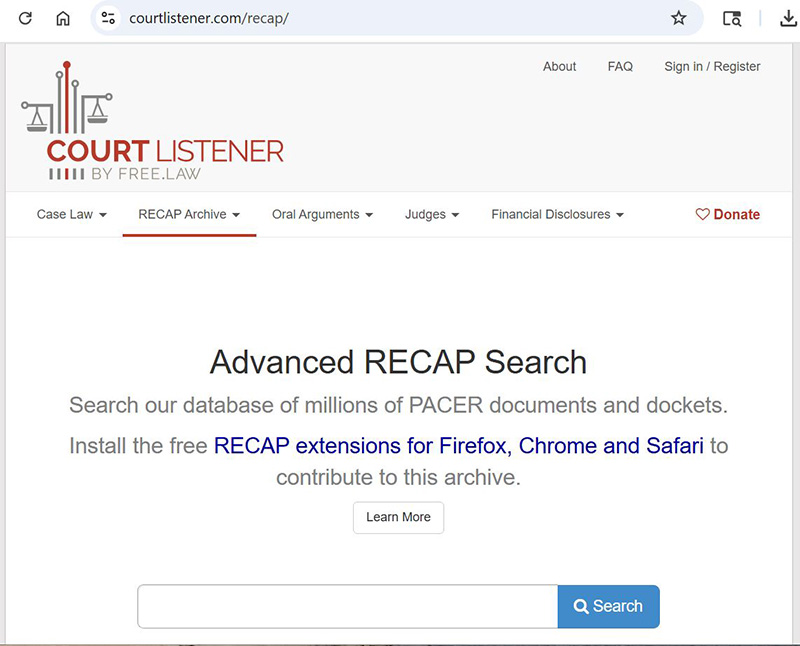
How do I search?
Using the Advanced RECAP Search page, enter the information you have about the case or try a keyword search. It is useful to combine information such as Nature of Suit code with the type of documents you want. Or, party name or docket number (if you have it) with the jurisdiction. For example, to find complaints in Civil Rights -- Voting cases, enter "complaint" (no quotes) in the document description and enter "441" (no quotes) in the Nature of Suit field. Also, check the box that says "Only Show Results with PDFs" to ensure the items returned will include some freely accessible documents. Approximately 1100 cases were returned with this search.
Not all cases will have freely available documents. Closely watched cases in the news are more likely to have more documents available. See for example, the docket sheet in Concord Music Group, Inc. v. Anthropic PBC, a copyright suit regarding the training of generative AI.
The RECAP Archive is just one part of Courtlistener. User can also search case law, find stored audio of oral arguments, and use citation tools.
Library News - Carol Hassler
Welcome new staff!
Please join us in welcoming new library assistant Alyx Thomsen, at the Milwaukee County Law Library!
Sign up for summer classes
Wisconsin Legislative History - Budget Bill Calamities
Wednesday, June 11, noon-1:00 p.m.
Location: Live webinar - Register for Wisconsin Legislative History - Budget Bill Calamities
Approved for 1 CLE credit
Statutory provisions created by a budget bill pose special problems in legislative history research. The budget bill process is complex and the drafting file created during the process is even more daunting. Learn how to identify statutes created by budget bills and how to navigate the drafting file. This advanced class covers additional techniques used in budget bill research.
Legal Research on Westlaw
Wednesday, July 16, noon-1:00 p.m.
Location: Live webinar - Register for Legal Research on Westlaw
This course provides an overview of legal research on Westlaw, from navigating the site to exploring content available. Also covered will be some more in-depth discussion on the kinds of search functionality within Westlaw: finding documents by citation, plain language searching and use of terms and connectors.
What’s New on Westlaw
Wednesday, August 6, noon- 1:00 p.m.
Location: Live webinar - Register for What’s New on Westlaw
This course will discuss the evolution of legal research engines to incorporate more advanced tools, such as more in-depth editorial tagging of caselaw, Artificial Intelligence and other things. We’ll talk about how technology is being used to increase efficiency in legal research, specifically with a focus on the Westlaw Precision platform and CoCounsel.
Libraries closed for holidays
The Dane County Law Library and Milwaukee County Law Library will be closed on Thursday, June 19th in observance of Juneteenth. Send questions and requests to the State Law Library at wsll.ref@wicourts.gov or call at 608-267-9696.
All three libraries will be closed on Friday, July 4th in observance of the Fourth of July. Send questions and requests to wsll.ref@wicourts.gov or leave a message at 608-267-9696. We'll get back to you on Monday, July 7th.
June Snapshot
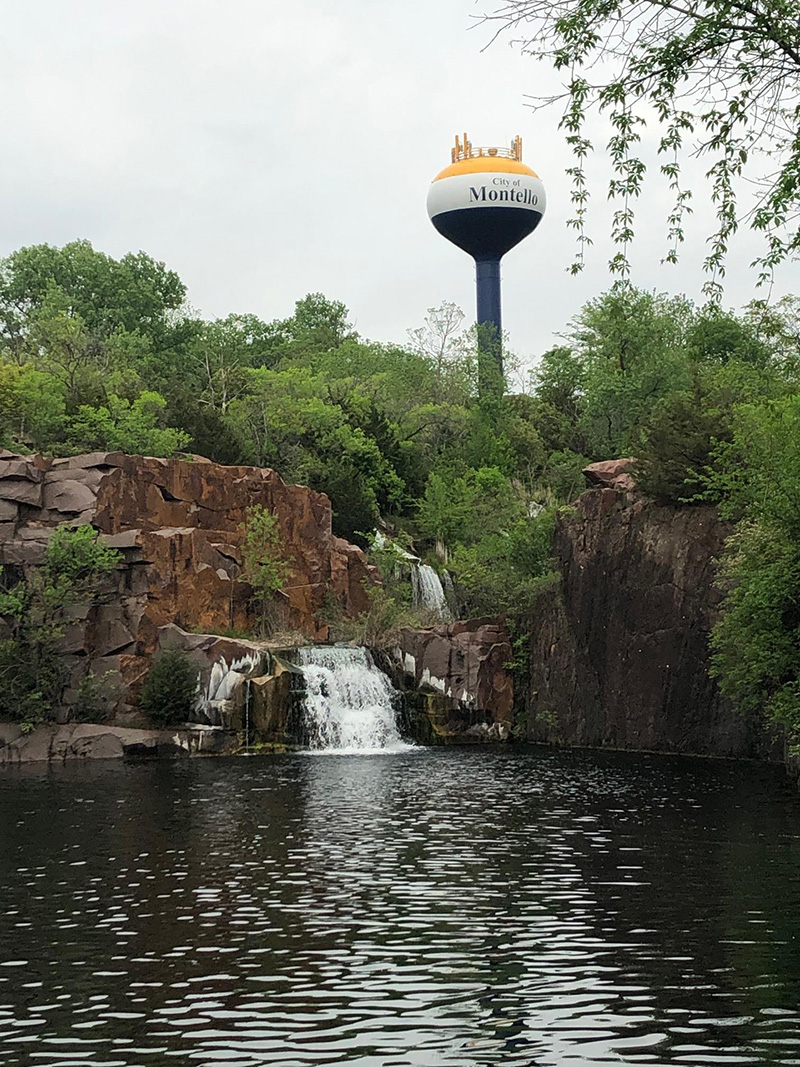
Numerous waterfalls grace Daggett Memorial Park in the City of Montello (which is also home to the Marquette County Courthouse). The park occupies land formerly used as a quarry. From 1879 to 1976, the Montello Granite Company operated in what grew to be the heart of the city. The quarry closed in 1976. In 1977, local businessman Irv Daggett purchased the quarry.
Man-made waterfalls throughout the park create a unique attraction. Granite from this quarry, found to be some of the hardest in the world, is among the stone used in President Grant's Tomb. It was chosen after a world-wide search, as reported in the Chicago Daily Tribune:
"Grant's Tomb is Ready: Granite Sarcophagus is on the Way to New York in Safety. President Anderson of the Chicago Company That Made It Relates How It Was Rescued from a Mob of Infuriated Miners at Montello, Wis., Bent on Its Destruction--Is the Finest Thing of Its Kind in the World. Threaten to Disfigure It. Massive and Imposing. Ceremonies on April 27." Chicago Daily Tribune, March 14, 1897.
We are accepting snapshots! Do you have a photo highlighting libraries, attractions or points of historical interest? Send your photo the editor at carol.hassler@wicourts.gov to be included in a future issue.
